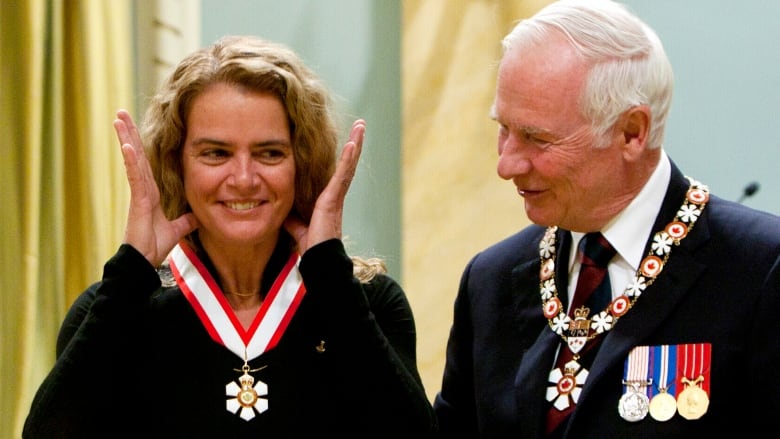Canada wasn't and isn't ready for an Indigenous governor general
It would be little more than window dressing: an empty gesture

Former astronaut Julie Payette is soon to be sworn in as Canada's next governor general, continuing the regular rotation of English and French governors general that's been in place since the institution was Canadian-ized in 1952. A block of Indigenous Liberal MPs, however, would've preferred an Indigenous person be nominated for the role.
"It would be incredibly significant for Canada," Liberal MP Dan Vandal told the Hill Times earlier this month. "It would be a real act of reconciliation with the highest levels."
Liberal MP Robert-Falcon Ouellette added that an Indigenous governor general would be a "symbolic" sign that Canada is changing.
Sending the wrong signal
While it's good to see these views present in the governing party, and good to see Indigenous MPs free to speak publicly in support of this position, their conclusion that the appointment of an Indigenous governor general would be a positive symbol of a changing Canada is wrong.
Sure, an Indigenous governor general would be a symbol, but primarily one to non-Natives to white Canada and a dangerous one that could derail reconciliation, at that.
Canada might receive its first Indigenous governor general in much the same way that the U.S. received its first black president. When Barack Obama was elected back in 2008, the message to American people of colour was that change was possible and that we're powerful enough to elect one of our own: a person who knows our struggles and our ambitions, and who can help to pave the way for others.
But while a symbol of hope and change to black America, Obama was also a symbol to many in white America that racism had been conquered. In a 2008 Forbes Magazine article entitled "Racism in America is Over," Manhattan Institute fellow John McWhorter wrote: "Our proper concern is not whether racism still exists, but whether it remains a serious problem. The election of Obama proved, as nothing else could have, that it no longer does."
In the same vein, I have no doubt whatsoever that had an Indigenous person been appointed as governor general, Canada's mostly white commentariat would be falling over themselves to declare that racism in Canada is "over," too. Especially since, even now, the idea that racism in Canada never really existed is mainstream enough to be given space in a newspaper. In the Vancouver Sun, for example, Douglas Todd recently wrote, "It's hard to think of a more treacherous single story about B.C. than the one alleging racism is alive and well."
Racism clearly exists in Canada today, and it is far from over. The week that Payette was named governor general was the same week that Barbara Kentner a victim of what many Indigenous people see as a racially motivated murder was buried. At the time of writing, Thunder Bay police has yet to file murder charges in her death (the only charges laid so far have been of aggravated assault).
And while many non-Natives work to downplay the existence of racism in Canada, Kentner's death, along with that of Colten Boushie in Saskatchewan, and of Cindy Gladue in Alberta, are just a few recent examples of what Indigenous people see as racially motivated killings.
These acts of racism demand urgent action, and signalling to white Canada that the job of reconciliation is done, and racism is over, is not the urgent action required. Instead it is a window dressing: camouflage for a state of affairs that treats Indigenous lives cheaply, and one in which the change that Indigenous people need is no closer than it was under the Stephen Harper regime.
All of the symbolism, none of the power
Unlike in the case of the first black president, the first Indigenous governor general would have no power to make any changes whatsoever. True, some past governors general have been able to highlight or bring greater attention to certain issues, but they can't direct funding, write policy or introduce new laws. He or she would have all of the symbolism with none of the power.
The Trudeau administration has burdened Indigenous peoples with one symbolic gesture after another. As with the failed inquiry into missing and murdered Indigenous women and girls, these symbolic gestures have stripped important issues of urgency in the imagination of the non-Native public. Changing the name of Langevin block does not restore clean drinking water to one First Nations home; seeing Justin Trudeau in his buckskin fringe acknowledging unceded Algonquin territory does not prevent one suicide. When it comes to "real change" on the ground, this government is short on results.
There will come a time when Canada is ready for an Indigenous governor general, but that appointment should be a capstone to mark real achievements toward equality; not just another symbolic gesture that gives the illusion of progress, while distractingpeople from the real work we all have to do.
This column is part ofCBC'sOpinion section.For more information about this section, please read thiseditor'sblogandourFAQ.












_(720p).jpg)


 OFFICIAL HD MUSIC VIDEO.jpg)
.jpg)



























































































